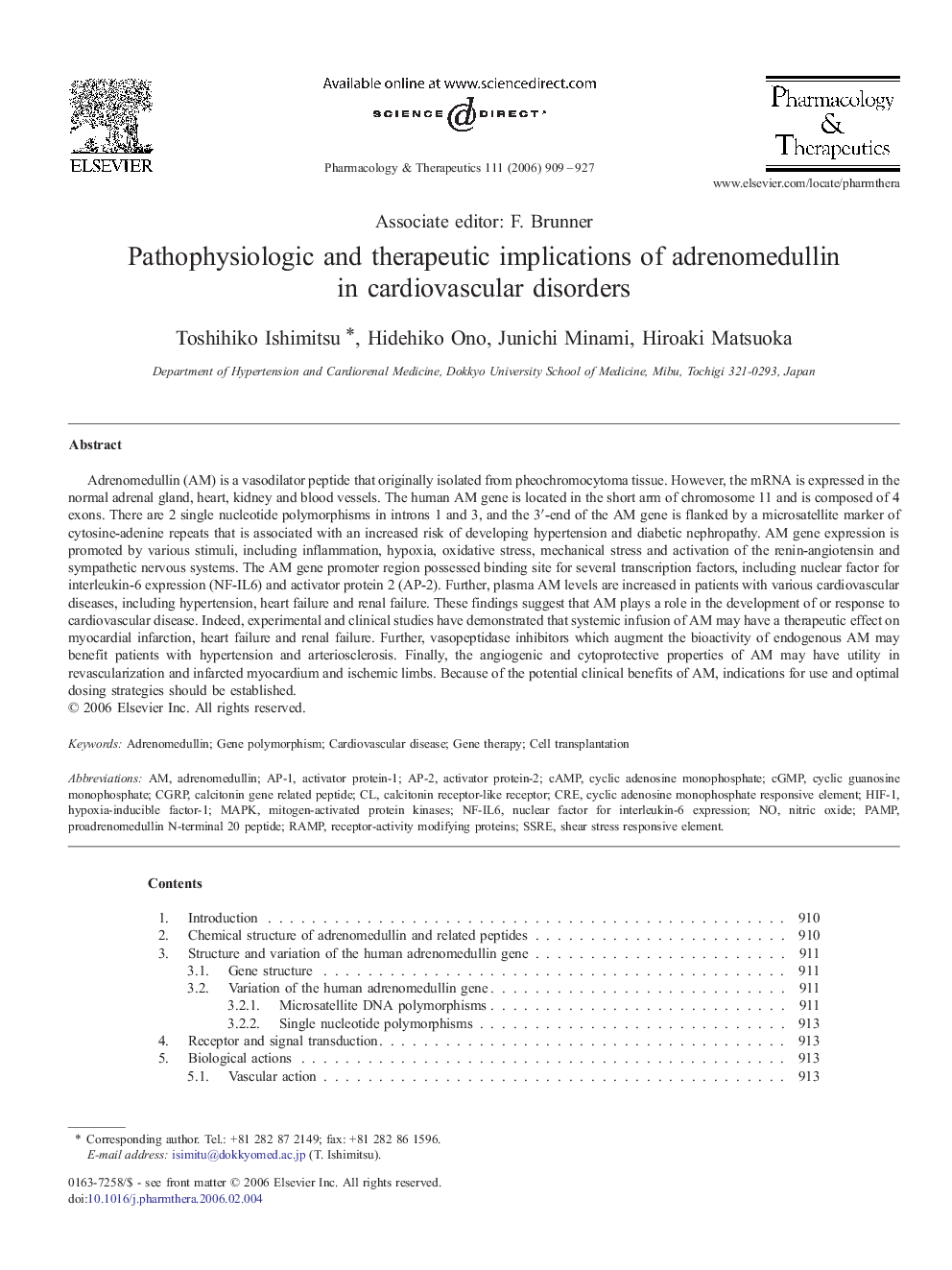| Article ID | Journal | Published Year | Pages | File Type |
|---|---|---|---|---|
| 2564302 | Pharmacology & Therapeutics | 2006 | 19 Pages |
Adrenomedullin (AM) is a vasodilator peptide that originally isolated from pheochromocytoma tissue. However, the mRNA is expressed in the normal adrenal gland, heart, kidney and blood vessels. The human AM gene is located in the short arm of chromosome 11 and is composed of 4 exons. There are 2 single nucleotide polymorphisms in introns 1 and 3, and the 3′-end of the AM gene is flanked by a microsatellite marker of cytosine-adenine repeats that is associated with an increased risk of developing hypertension and diabetic nephropathy. AM gene expression is promoted by various stimuli, including inflammation, hypoxia, oxidative stress, mechanical stress and activation of the renin-angiotensin and sympathetic nervous systems. The AM gene promoter region possessed binding site for several transcription factors, including nuclear factor for interleukin-6 expression (NF-IL6) and activator protein 2 (AP-2). Further, plasma AM levels are increased in patients with various cardiovascular diseases, including hypertension, heart failure and renal failure. These findings suggest that AM plays a role in the development of or response to cardiovascular disease. Indeed, experimental and clinical studies have demonstrated that systemic infusion of AM may have a therapeutic effect on myocardial infarction, heart failure and renal failure. Further, vasopeptidase inhibitors which augment the bioactivity of endogenous AM may benefit patients with hypertension and arteriosclerosis. Finally, the angiogenic and cytoprotective properties of AM may have utility in revascularization and infarcted myocardium and ischemic limbs. Because of the potential clinical benefits of AM, indications for use and optimal dosing strategies should be established.
